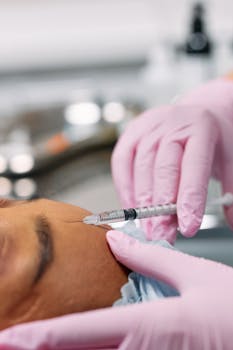Many patients considering body contouring ask whether a combined approach — addressing the midsection and the breasts at the same time — is right for them. A tummy tuck and breast lift can be performed together to restore a firmer abdomen and a perkier chest after pregnancy, weight loss, or age-related changes. This article explains what the combined procedures involve, who makes a good candidate, typical recovery expectations, and important safety considerations.
Tummy tuck & breast lift: what the combined procedure involves
“Tummy tuck” (abdominoplasty) focuses on removing excess abdominal skin, tightening separated abdominal muscles, and reshaping the waistline. A breast lift (mastopexy) repositions the breast tissue and nipple to correct sagging without necessarily changing size. When performed together, the surgeon plans incisions and anesthesia to minimize overall time under surgery while achieving coordinated aesthetic results. For technical details about abdominoplasty, see this reliable overview: Abdominoplasty (Wikipedia).
Who is a good candidate?
Ideal candidates are adults in good general health with stable weight and realistic expectations. Women who have completed childbearing and who smoke-free are more likely to have safer recoveries and better outcomes. Those seeking a “mommy makeover” often combine a tummy tuck and breast lift to address changes from pregnancy. Some people use informal terms like tummy tuck boob job to describe the combined transformation — it’s helpful to bring clear photos and goals to your consultation so your surgeon can tailor the plan.
Benefits and trade-offs
- Benefits: Single anesthesia event, consolidated recovery time, and coordinated shaping of midsection and breasts for balanced proportional results.
- Trade-offs: Longer operative time compared with a single procedure, potentially higher short-term discomfort, and the need for careful surgical planning to manage risks like infection, bleeding, or wound healing problems.
What to expect during recovery
Most patients spend the first week resting at home with limited mobility and light walking to reduce clot risk. Drains are sometimes placed after a tummy tuck and removed within several days to two weeks. Swelling and bruising are normal and can take weeks to months to fully settle. Combining procedures typically means you’ll need someone to help with errands and childcare for the initial two weeks. Your surgeon will give a personalized timeline for resuming exercise and heavy lifting.
Risks and safety considerations
All surgeries carry risks. Smoking, uncontrolled diabetes, obesity, and certain medications can increase complications. Choosing a board-certified plastic surgeon with experience in combined procedures is important. Discuss blood clot prevention, infection control, scar expectations, and contingency plans for complications during your consultation. Be honest about medical history and follow preoperative instructions closely to improve outcomes.
Planning and preparation
Preoperative planning includes photographic documentation, medical clearance, and discussion about scarring, implant options (if augmentation is combined with a lift), and realistic results. Nutrition and skin care can affect healing — ask your provider about optimizing protein intake and gentle skincare before and after surgery. For general skin-friendly practices that support healing and long-term skin health, consider reading this resource on sustainable skincare: descriptive anchor text.
Alternatives and complementary options
If you’re hesitant about combined surgery, staged procedures (breast lift first, tummy tuck later) are an option. Non-surgical alternatives like skin tightening treatments or targeted fat reduction can help some people but won’t address significant excess skin or muscle laxity. Discuss all options, including the likelihood of needing revision procedures down the line.
Cost and insurance considerations
Cosmetic procedures are usually paid out-of-pocket. In rare cases where functional problems exist (for example, a hernia or severe back pain linked to separated abdominal muscles), part of the abdominal repair may be covered by insurance. Verify coverage and obtain itemized estimates for surgeon, anesthesia, facility, and post-op care.
- Takeaways
- Combining a tummy tuck and breast lift can produce harmonious, single-session results but involves longer surgery and a concentrated recovery period.
- Good candidates are non-smokers, medically stable, and have realistic expectations about scarring and recovery.
- Careful preoperative planning, surgeon selection, and postoperative support improve outcomes.
Q: How long until I can return to normal activities?
Most people can return to desk work within two weeks and resume light exercise by 4–6 weeks. Strenuous lifting and high-impact activities usually require 6–12 weeks depending on your surgeon’s guidance and how quickly you heal.
Q: Will combining procedures increase my complication risk?
Combining procedures can slightly increase the risk compared with a single surgery because operative time and the extent of tissue manipulation are greater. However, for many healthy patients, the benefits of a single combined recovery outweigh the incremental risk—discuss individualized risk with a board-certified plastic surgeon.
Q: Can I breastfeed after a breast lift?
A breast lift aims to preserve breast tissue and sensation when possible, but it can affect breastfeeding depending on incision type and individual anatomy. If future breastfeeding is a priority, discuss implant-free options or timing your surgery accordingly.






